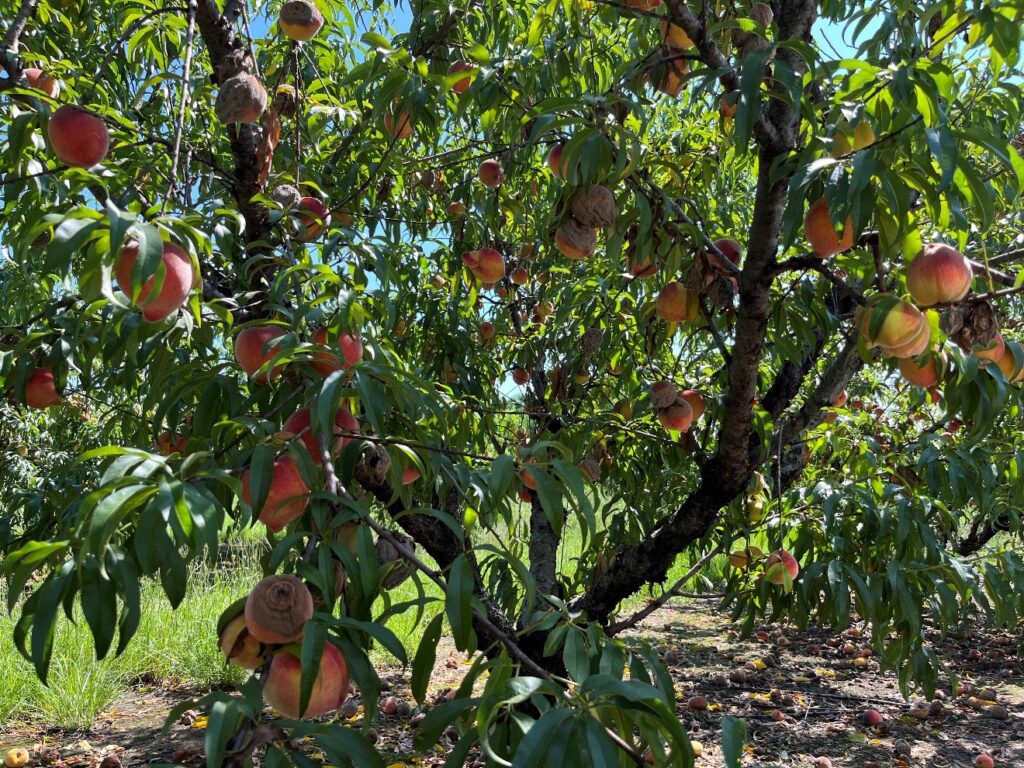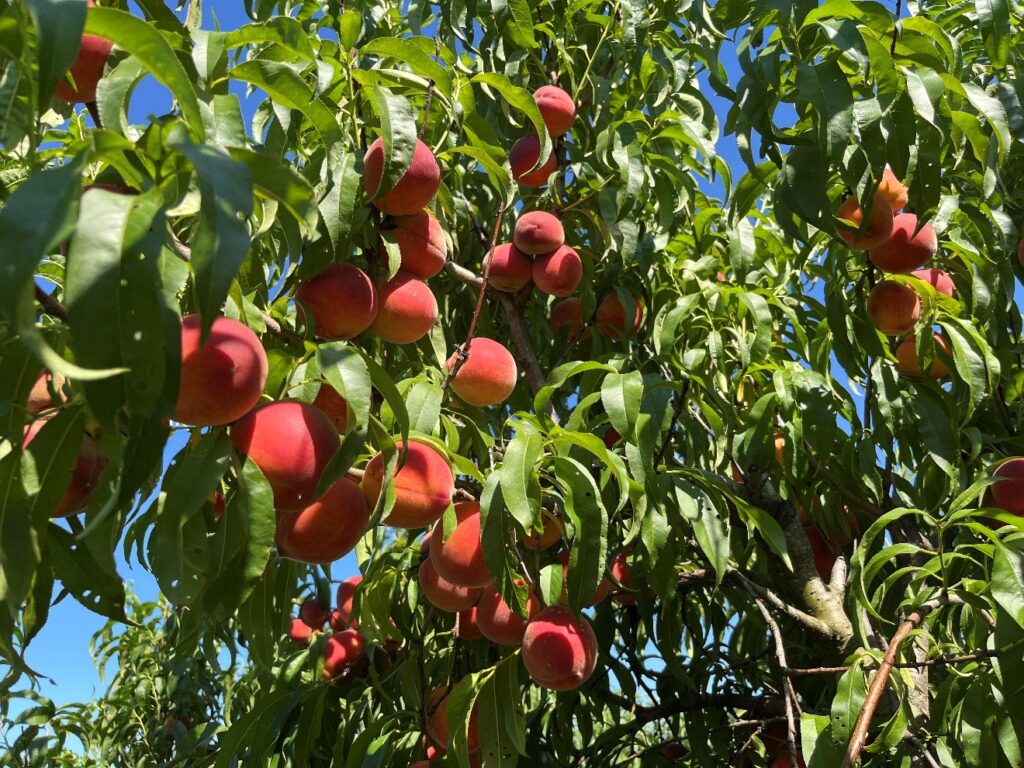Peach production is different every year. Byron peaches in 2025 were somewhat different, too, due to environmental conditions and unexpected reduced sprays. A few observations are summarized in this article. This summer it was hot and rainy. Pesticide sprays in Byron were partially carried out due to unexpected reduction of the farm management crew. As a result, fruit started to rot earlier than any year with a full regular spray schedule. Many genotypes showed varying degrees of premature fruit rot and drop, but most peaches still produced sufficient healthy ripe fruit for evaluation whereas most nectarines did not. Considered positively, the situation facilitated identifying genotypes with a full crop of healthy ripe fruit, which might be truly tolerant to brown rot or at least presumably possess some rot-limiting factors. For example, such a factor might be fruit in some of these genotypes less attractive to fruit-stinging insects, because fruit with any insect or physical injury usually rot inevitably and quickly. Peach fruit set in Byron was like last year and generally heavy with smaller average fruit sizes and some variations on most of the selection and cultivar trees evaluated. Contradicting to the suggestion given in 2024, heavy fruit set last year appeared to have little impact on fruit set this year. Likewise, the data collected this year would continue to help monitor the performance of those well-sized selections with commercially desired cropping load and little need for manual thinning.

Fig. 1 Peach selection with many premature rotten fruits.

Fig. 2 Peach selection with no/few premature rotten fruits.